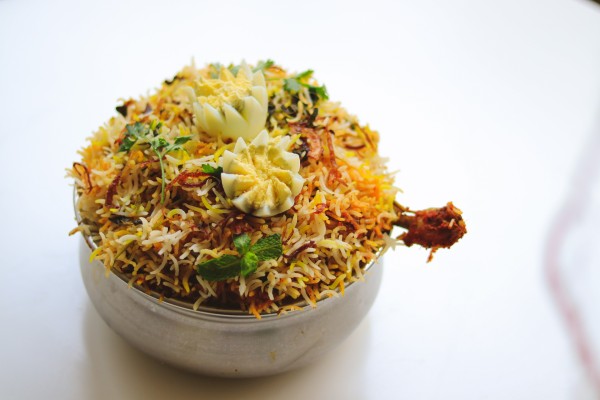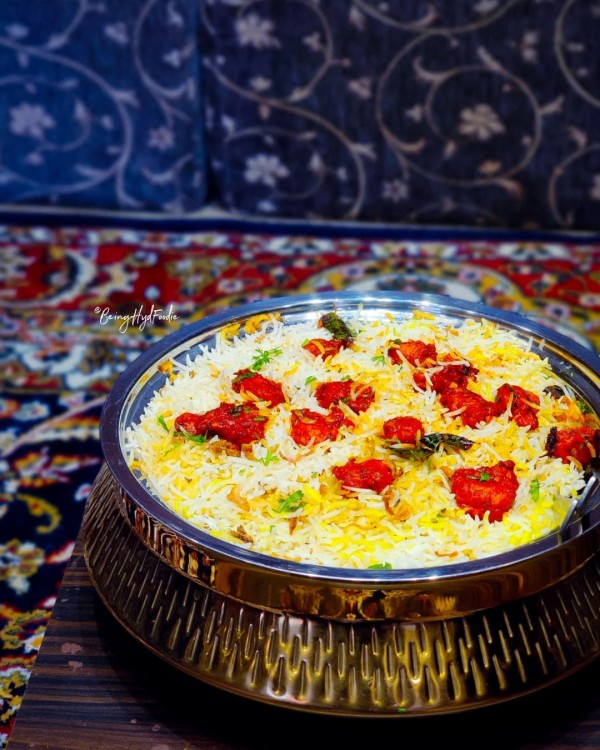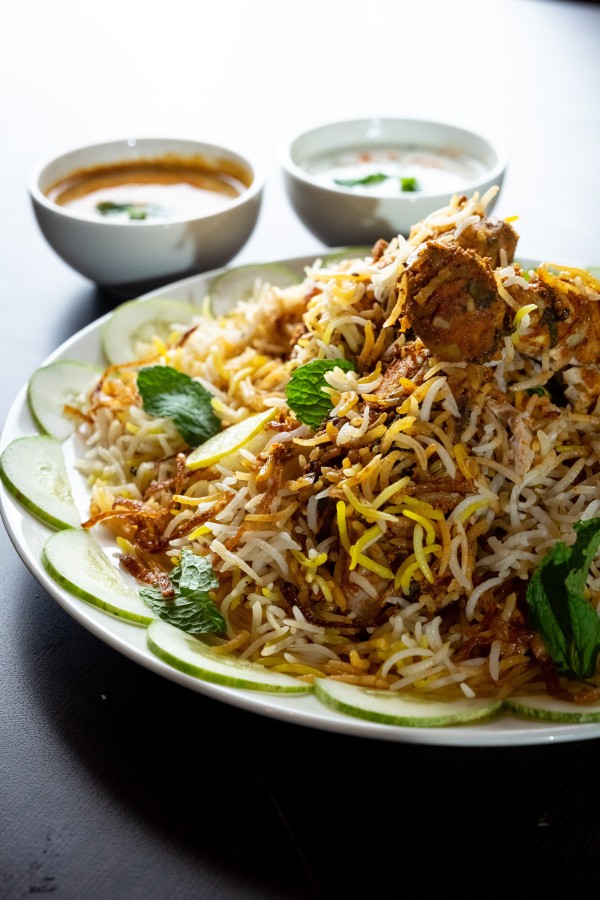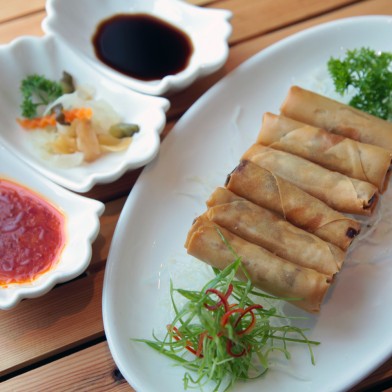Wherever you are in India - from the nooks of Lucknow's streets to the coasts of Kerala - the fragrance of biryani cooking is likely to be drifting from countless eateries. But everyone has their own take on the famous rice dish, influenced by culture, history, and personal preference. Writer Anusha Kulal takes us through some of the most well-known varieties of biryani across the country.
Growing up in the coastal town of Mangalore in Karnataka, biryani was synonymous with special occasions – a Sunday feast, family gatherings, wedding banquets, or the arrival of Ramadan. We lived in a neighbourhood that housed people from all faiths and religions and this meant the frequent exchange of special foods when the festivities are upon us. Every Ramadan, as the fragrant and spice-laden aroma of the biryani pervaded the lanes in my neighbourhood, I would often make myself visible to neighbours, hoping to get an invite to a Ramadan feast.

The flavours and spices of biryani vary from region to region, depending on the history and mix of cultures. Image: Uday Teja
I attribute the insatiable nature of biryani to the variety of this dish. As I travelled across India, I chanced upon biryani cooked in different ways each offering a unique take on this rice dish. The use of regional ingredients combined with the pride and precision involved in cooking the biryani is why my travel itinerary always has a ‘biryani stop’.
And, what’s not to like in biryani? Its fragrant rice layered with a melange of spice-coated meat, and just enough gravy to seep into the rice, topped with caramelized onions. There are not enough days in a year for me to eat all the different kinds of biryani India has to offer. Each region has its unique way of cooking this dish and I recommend you try every single one you can get your hands on.
Lucknow Biryani
While it’s hard to pinpoint where biryani originated in India, everyone in Lucknow, a city in Uttar Pradesh, and most people elsewhere point to the city of Nawabs. Nawabs were governors appointed by the Mughal Emperors during their rule, and are known for their extravagant lifestyle and interest in the arts. What once was a dish reserved for royalty is now cooked in gusto in the nooks and corners of Lucknow. The biryani is known for its subtle flavours; the meat and rice are cooked separately in a dum (cooked low and slow in a pot sealed with dough), allowing the flavours and aroma to infuse into the rice and meat. You smell this dish before you see it, and that alone is enough for you to brave a second lunch. When I dug into a plate of Lucknowi biryani, with the tender pieces of mutton peeking out from the rice, it was love at first bite.
Kolkata Biryani
You can spot a plate of Kolkata biryani from a mile away. Among the flavoured rice and fall-off-the-bone meat sits the very emblem of this dish, a potato, often served full or in huge chunks along with a boiled egg. Just like the rice, the potato absorbs all the flavours from the meat and spices and is a fine addition to the biryani. Like the Lucknowi biryani, the reason behind the obsession with this biryani can be found in its subtle flavours.
Hyderabadi Biryani
The Hyderabadi biryani does not hold back on its flavours. Heat is an essence that is deeply embedded in Hyderabad, be it the scorching heat, the fiery Guntur chilli, or the spicy Hyderabadi Biryani. Each eatery has an Ustad (chef) who adds their own twist to the biryani on offer. According to Anas Murtuza of Beinghydfoodie, the perfect Hyderabadi biryani calls for meticulously measured ingredients and time-tested, flavour-enriched techniques. He highly recommends a visit to Café Bahar in Basheerbagh and Peshawar in Lakdikapul for authentic Hyderabadi biryani. Hyderabad is also home to Mandi – a dish similar to biryani served on a communal plate which can be shared between 3-4 people.

Hyderabadi Biryani is famous for its heat. Image: Anas Murtuza of Beinghydfoodie
Kalyani Biryani
Another favourite amongst the locals of Hyderabad, Kalyani biryani has a story to tell. In the 18th century, Kalyani Nawabs migrated from Bidar to Hyderabad and in doing so carried a piece of their legacy that would be forever etched in the hearts of Hyderabadis. The kitchens set up in Hyderabad used to serve the migrants from Bidar with Kalyani biryani. Word got out quickly and people flocked to the kitchens which then served the biryani with either chicken or mutton meat. To cope with the rising costs, the Ustads replaced the meat with that of the buffalo. Due to its affordability, the biryani was considered a poor man’s biryani. Today, to find Kalyani biryani, AKA buff biryani, you would have to follow the lunchtime rush as no billboards are advertising this dish owing to the political and communal conflicts that arise due to the use of buffalo meat. Although beef is usually at the centre of these conflicts, the use of buffalo meat is frowned upon as well.
Kashmiri Biryani
Kashmir’s complicated history has influenced its culture in more than one way. The Kashmiri Pandits, who lived there before the 1990s preceding the unrest that followed, were one of the few non-vegetarian brahmins who heavily indulged in meat and who initiated the use of yoghurt, saffron and asafoetida in their cooking. In the past, many invaders from Central Asia including Timur-e Lang from Uzbekistan have also greatly influenced the style of cooking and the ingredients used. While the history might not be colourful, the hospitality and the food of the Kashmiris can only be defined as exquisite. The Kashmiri biryani is rich in flavour owing to the use of milk, dry fruits, and indubitably, saffron.
Ambur Biryani
The quaint little town of Ambur located on a highway almost equidistantly between Chennai and Bengaluru rose to its fame in the 19th Century for two reasons: The establishment of one of the largest leather manufacturers in India and the birth of the legendary Ambur biryani sold only from the home of iconic Hussain Baig. The biryani is cooked with the ever-so-flavourful Seeraga Samba rice with hand-ground spices over firewood. Unlike most varieties, Ambur Biryani is not heavily spiced and its secret lies in the rice and the meat, both infusing their flavour on each other. Soon enough, Hussain’s biryani saw a beeline of visitors, leading to him expanding the biryani venture into large gatherings and weddings. Eventually, the sons and sons-in-law opened many eateries (that are still running), one bigger than the other and Star Biryani was born. To locals, the many outlets of Star Biryani are synonymous with Ambur Biryani.

Not only does biryani vary from region to region, each chef will have their own twist. Image by Shreyak Singh on Unsplash
Dindigul Thalappakatti Biryani
Thanks to the genius of Mr Nagasamy Naidu, who always wore a Thalapa (a traditional head accessory akin to a turban), the iconic eatery earned its fame by serving biryani cooked with Seeraga samba rice, top-quality meat and spices that was scrupulously picked by Mr Nagasamy himself. The consistency of this dish is a result of using the same iron-clad recipe since 1957. Instead of the esteemed layers, this biryani is a one-pot dish and is usually served with Dalcha, gravy cooked with mutton bones, brinjal, potatoes and lentils. Apart from India, Dindigul Thalappakatti Biryani has branches across Sri Lanka, Dubai, Malaysia, France, and the USA.
Donne Biryani
One of my favourites as this was a go-to biryani in my Bangalore days. A simple biryani infused heavily with mint and coriander leaves using Seeraga samba rice served in Donne leaves – thus earning the name of the dish. Donne biryani is also one of the few biryanis served as a breakfast fare. Few eateries in Bangalore open as early as 5 AM and close shop by 10 AM.
Thalassery Biryani
Thalassery biryani is one of many feathers in the cap of the delectable dishes in the Mappila community. The popularity of the Malabar coast’s spice attracted many Arabic traders who eventually settled in Kerala. Over time, the amalgamation of the two cuisines led to the birth of Thalassery biryani. What sets the biryani apart is the use of Jeerakasala (a short grain variety) of rice, special masala, and the addition of raisins. This rice brings a distinct taste to the dish and the addition of special spices results in a subtle heat that creeps up as you devour this dish.
Memoni Biryani
A fiery biryani from the Memoni community in the Gujarat-Sindh region. The roots of this community can be traced to Pakistan where the Memoni Biryani is favoured by many locals. Apart from its diverse history, the beauty of this dish lies in the way its cooked, low and slow, imparting a smoky flavour to the lamb, the most common meat used for this biryani.
- Asia Media Centre



